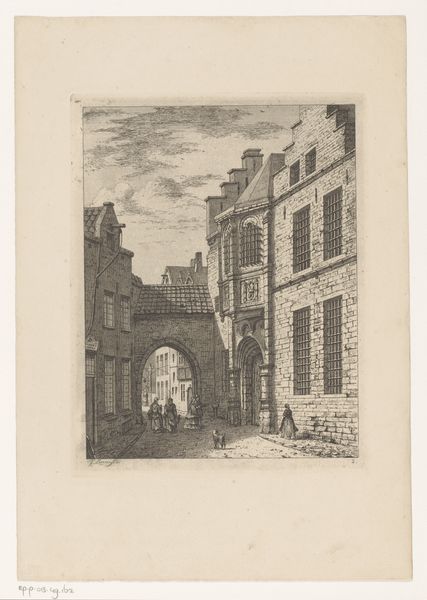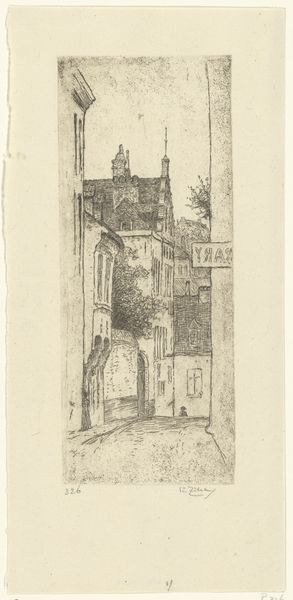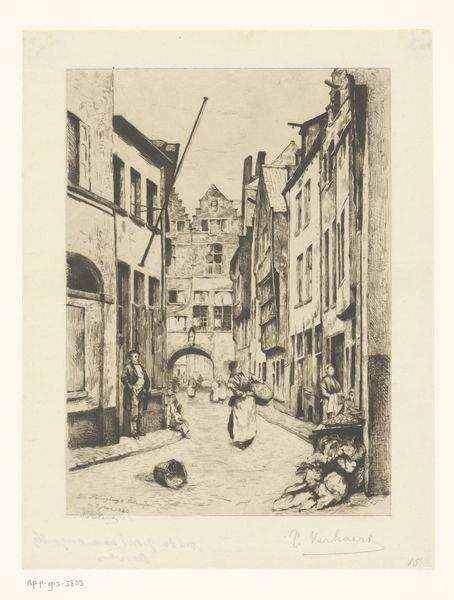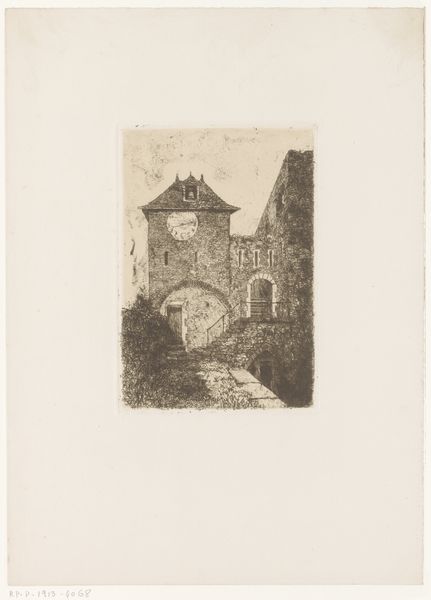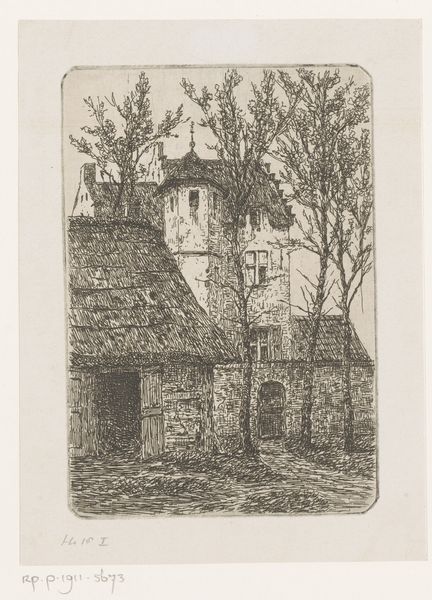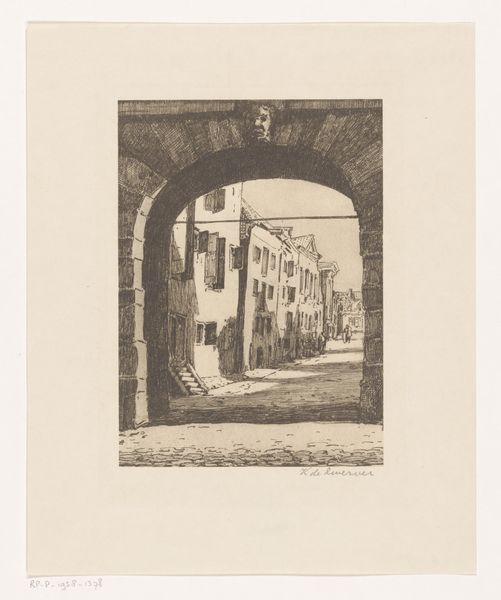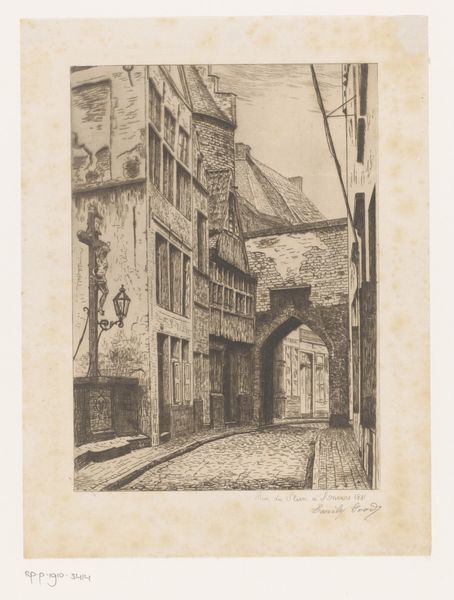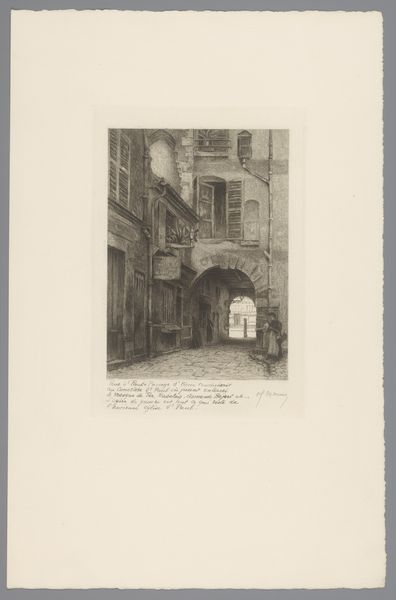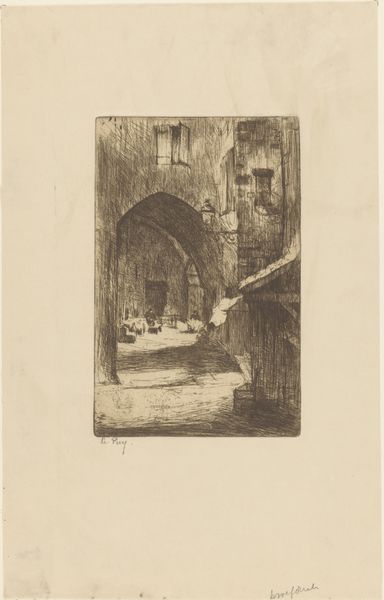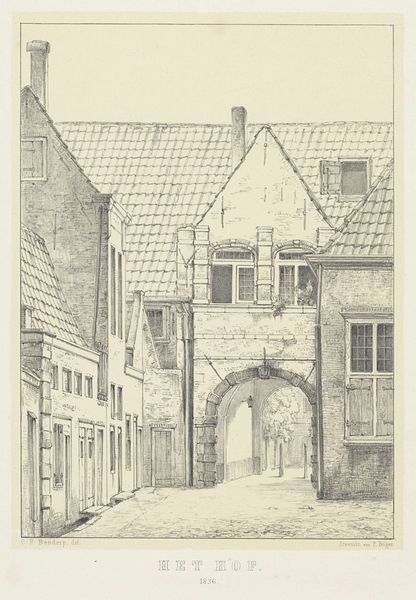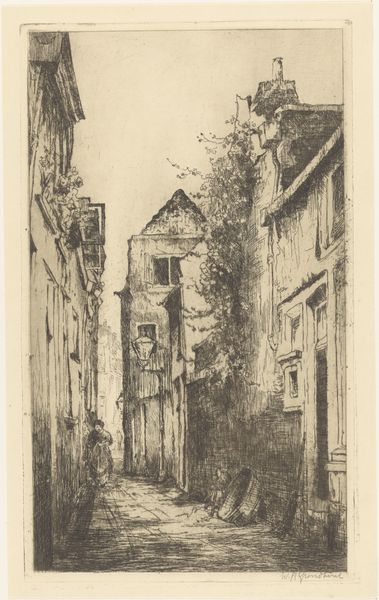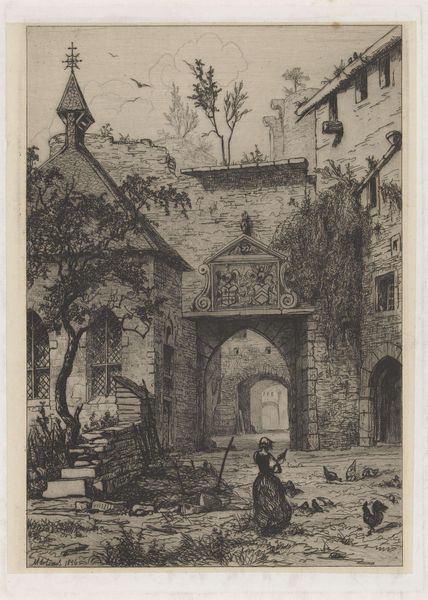
drawing, print, etching, engraving
#
drawing
#
ink paper printed
# print
#
etching
#
pencil sketch
#
landscape
#
pen-ink sketch
#
cityscape
#
engraving
#
realism
Dimensions: height 259 mm, width 188 mm
Copyright: Rijks Museum: Open Domain
Editor: This is Stadspoort, a black and white etching from 1879. It's attributed to Maria van Hohenzollern-Sigmaringen. I find the starkness of the scene, with its focus on the imposing city gate, quite striking. It almost feels like a stage set. What catches your eye about it? Curator: What's interesting here is not only the *what* but the *who* and *why.* A member of nobility producing this realistic scene. It's quite unlike what was typically expected of artists in aristocratic circles. Editor: Interesting! I never considered who the artist was and what their context was like. What was expected? Curator: We must see that etching was a very democratic form, reproducible, easily disseminated and often tied to public awareness campaigns. This wasn't some grandiose portrait to solidify family power. She focused on urban scenes which reflects a changing taste among certain elites to capture everyday life. Consider its historical context: cities were rapidly industrializing, and ideas about national identity were becoming very strong. Could this choice of subject – a city gate – hint at her thoughts on who gets to enter, who belongs? Editor: That's fascinating. I was purely focused on the visual, on the architecture, but you're suggesting it also conveys ideas about society? Curator: Precisely. And think about *why* a member of nobility engaged with a widely reproducible medium at the time. Perhaps in the act of distributing, Maria sought public sentiment on urban modernization, while establishing a sense of national artistic heritage, using architecture, in her art. The perspective emphasizes public accessibility – inviting engagement and creating potential dialogue at a time of immense change and debate regarding public space. How does knowing this make you see the artwork differently? Editor: I see the artwork completely differently now! It's much more of a commentary than I had initially thought. Thank you! Curator: Indeed! It underscores the important public role of art, beyond mere aesthetics or display of skill. The artist had some level of intention, consciously or unconsciously contributing to shaping social narratives.
Comments
No comments
Be the first to comment and join the conversation on the ultimate creative platform.
